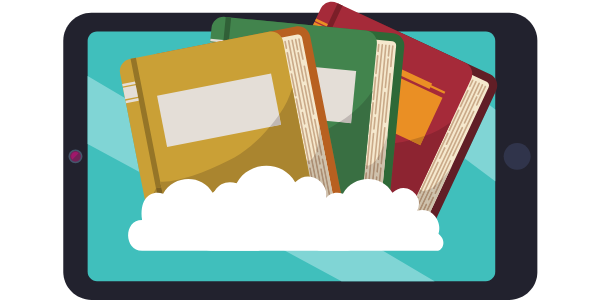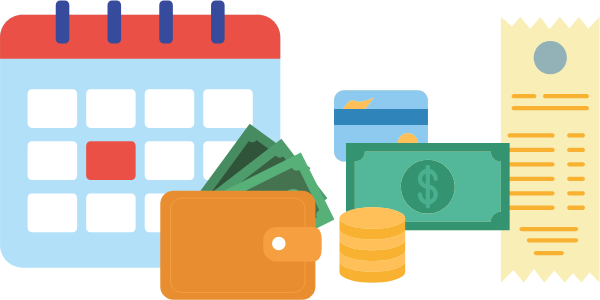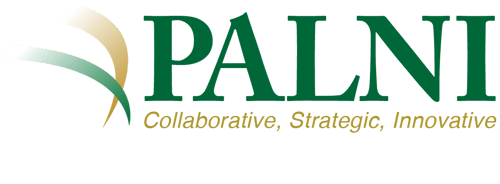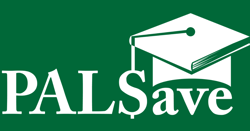About PALSave
Supported by Lilly Endowment Inc., the PALSave Affordable Learning Program drives student success through zero-cost learning materials by funding faculty to review, adopt, adapt, and create open educational resources (OER) across Indiana’s private colleges. PALNI has received a new $1.34 million grant to launch the next phase of this transformative work. The four-year initiative, Strengthening the PALSave Affordable Learning Program for Greater Impact, builds on PALSave’s success in reducing textbook costs, expanding access to learning materials, and empowering faculty to advance open educational practices.
Expansion Goals for the Next Phase
PALNI aims to build on PALSave’s success and expand its impact in the coming years through this continued support. Goals for the next phase include:
-
Build awareness
Increase faculty and administrator engagement through education campaigns and workshops.
-
Expand OER availability
Partner with PALNI Open Press to create and sustain more high-quality OER materials.
-
Ensure sustainability and quality
Establish workflows for updating and maintaining OER.
-
Increase faculty engagement and capacity
Provide flexible opportunities, including stipends and fellowships.
-
Address automatic billing programs
Develop faculty guidance on reducing textbook costs through informed decision-making.
As PALSave expands its efforts to empower faculty and sustain high-quality open resources, the program remains driven by one urgent need—addressing the growing challenge of textbook affordability. The infographic available here and detailed below highlights the impact of rising costs in 2025 and why these expansion goals matter more than ever.
.png?width=600&height=300&name=textbooks%20graphic%20(1).png)
Textbook Affordability in 2025
In 2025, textbook affordability remains a significant concern in higher education. However, various initiatives and an overall shift to digital have decreased costs over the last decade.
Student Challenges
- 7 in 10 students worry about textbook costs
- 65% skipped buying textbooks due to price
- 57% say cost influences how many classes they take
- Negative effects are rising compared to 2018-19
- 94% of students have tried at least one method to reduce textbook costs


Faculty Perspective
- 63% of faculty prioritize textbook affordability (up from 57% in 2021)
- 40% need help understanding cost-effective course material options
Source: Student Challenges and Faculty Perspective reported by Inside Higher Ed in 2024.
Trends in Cost and Spending
- Prices rise 6% yearly, doubling every 11 years
- Student budgets have remained around $1,200 since 2010
- Actual spending on course materials hit a decade-low of $285 in 2022-23
Source: Reported by the Education Data Initiative in 2024.


Shift to Digital Textbooks
- Post-COVID, 92% of textbooks are now digital, which can reduce price
- E-textbook use doubled to 68% in 2023 (up from 37% in 2016)
- However, commercial ebook prices are rising, particularly for libraries
- OER and Automatic Billing are two prevalent initiatives focused on digital course materials, with different approaches
Source: Seaman & Seaman, 2024; NACS, 2024; Readers First, 2024.
Automatic Billing
Automatic Billing, or sometimes called “Inclusive Access,” is a textbook sales model that adds the cost of digital course content into students’ tuition and fees. While these programs aim to ensure timely access to materials, it can be difficult to opt-out, and their effectiveness in reducing costs is debated.
Source: Ridlington & Xie, 2024.

.png?width=600&height=300&name=OER%20graphic%20(1).png)
Open Educational Resources (OER)
OER are openly licensed, editable, completely free course materials.- A shift is occurring, with 26% of higher education faculty now requiring OERs
- Most faculty are aware of OER
- The Open Textbook Library has grown by 133% since 2019
- 93% of reviews in the Open Textbook Library include ratings of at least 4 out of 5 stars
- OER-enabled pedagogy is associated with active learning
Sources: Bay View Analytics, 2024; NACS, 2024; OEN, 2025; McKenney et al., Simon et al., Mowreader, 2024
Today's Challenges to OER
In 2024, The Chronicle of Higher Education identified several challenges to the OER movement. These are the issues PALSave would like to address in its next programming phase.
-
OER awareness declined in 2023-2024 for the first time in a decade
-
OER remains unavailable for many courses, such as upper-level humanities classes
-
Lack of funding for maintenance threatens OER sustainability and quality.
-
Open programs must address the challenge that tricky-to-navigate automatic billing textbook programs present to increase OER use and support.
.png?width=600&height=300&name=Challenges%20graphic%20(1).png)
Get Involved
If you’re part of a PALNI-supported institution, reach out to the PALSave team to explore opportunities for faculty and discover how you can get involved on your campus.

